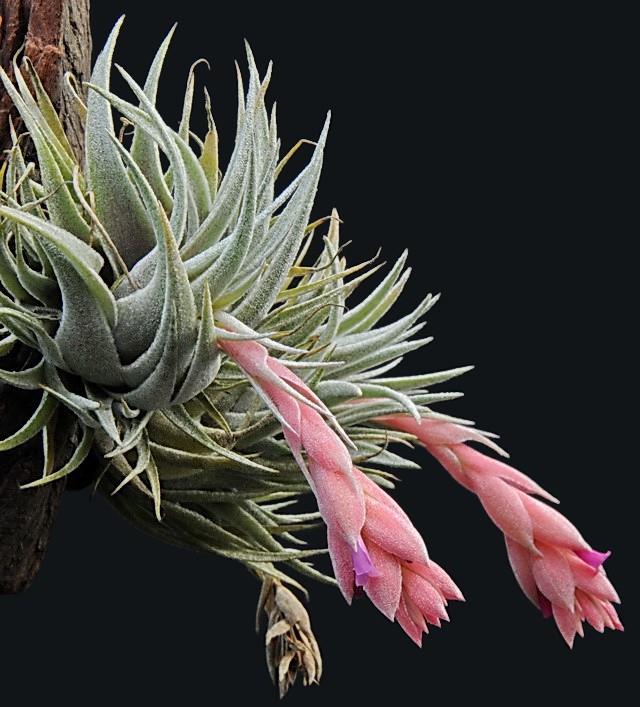
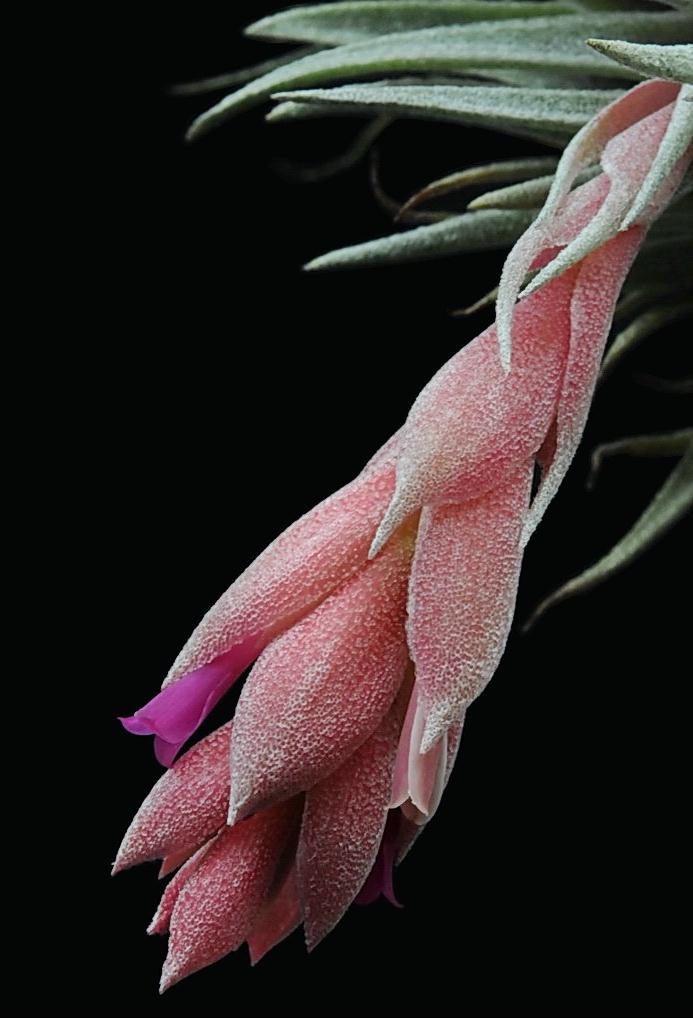
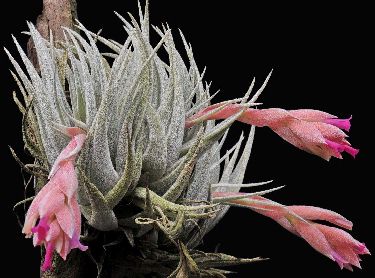
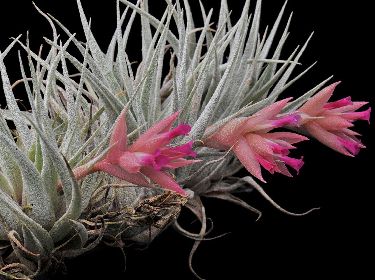
"type" from Lotte. - - - from Holm. |
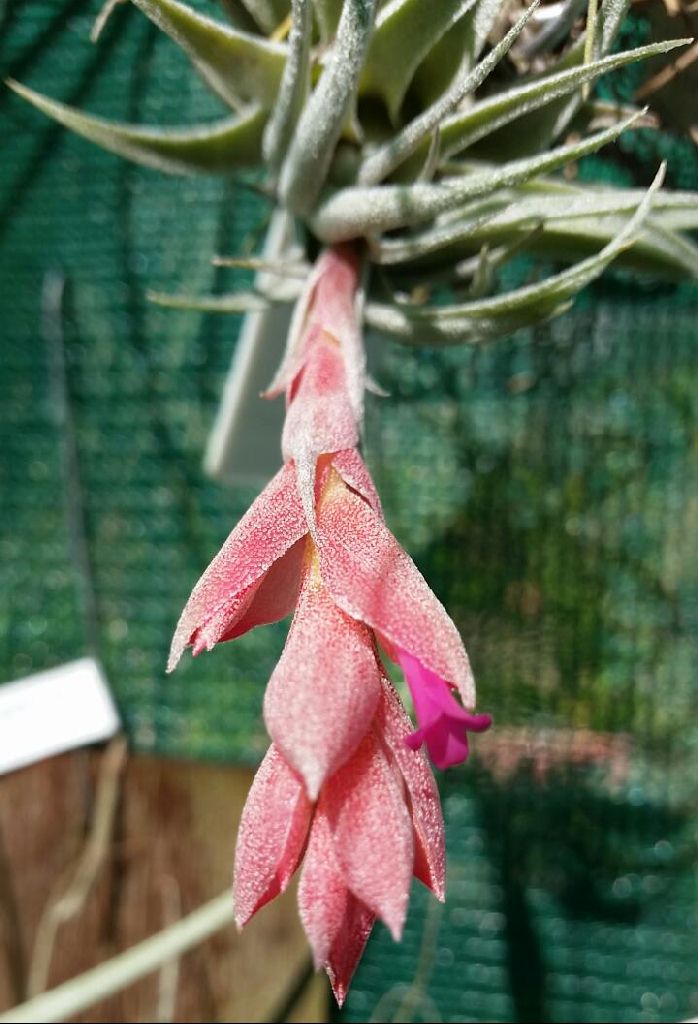
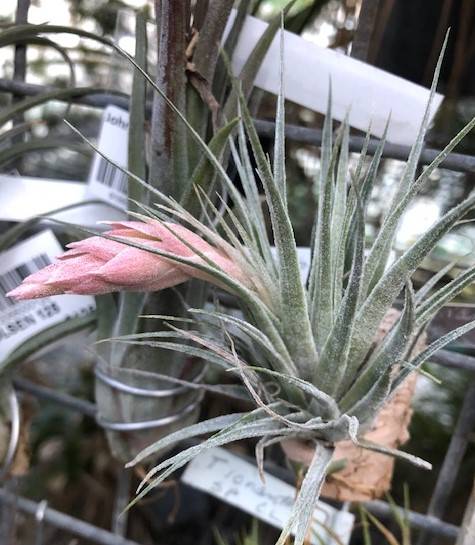
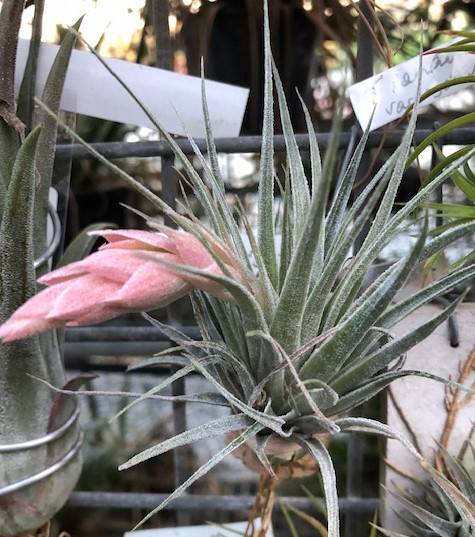
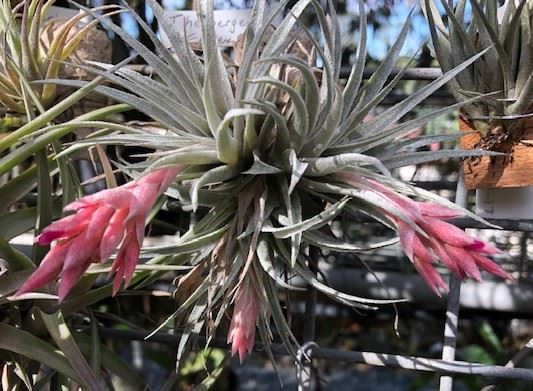

Plant single or growing in small groups on rocks, stemless, the dead part at the base sometimes forming an up to 7cm long, 5-8mm thick dark brown rhizome, 4-8cm high, 3-5 (- 8)cm wide, forming an erect, mostly secund, subbulbose, sometimes almost spreading rosette with many grey appressed lepidote leaves; the bottom leaves sometimes shorter and strongly bent outwards,
Leaves: many (20-50), up to 7cm long, standing almost erect and dense, the bottom ones reduced and recurved, grey green, almost thin and soft, appearing grey because of densely rough grey scales, the margins with large rough winged trichomes.
Sheath 2-3cm long, 1-1.8cm wide, elliptic, flat, little distinct from the blade, light brown, except the glabrous base, both sides densely grey lepidote.
Blade 2-4cm long, 4-8mm wide, triangular attenuate, almost flat, the edges bent inwards, grey green, densely and regular covered with large rough whitish-grey trichomes (outside more marked), appearing as a uniform grey felt.
Scape: 3-4cm long, 3mm in diameter, almost erect to decurved, densely white lepidote, extensively covered by the 10-15mm long, 5-7mm wide elliptic sheaths of the leaf-like, imbricate scape bracts; the thin membranaceous blade triangular, acuminate, canaliculate, tip densely lepidote like the leaves.
Inflorescence: 3cm long, 2cm wide, oval, simple, with 5-11 sessile, densely polystichous, slightly spreading flowers.
Floral bracts: 1.8-2cm long, 9-11mm wide, exceeding the sepals, oval, acute, the bottom ones with a sharp tip, thin membranaceous, strongly nerved, not carinate, inside sparsely punctulate lepidote, outside bright dark pink, with dense and regular fine white scales.
Sepals: 1.3-1.4cm long, 3.5-4mm wide, lanceolate, acute, membranaceous, light green, nerved, sparsely and finely lepidote, nearly free, the posterior ones carinate.
Petals: 2-2.3cm long, 2.5-3mm wide, tapering to 2mm at base, narrow oblanceolate, forming an erect tube with an open throat, the rounded tip recurved, above intensively lilac - pink, the base white.
Stamens: enclosed. Filament 1.5cm long, thin ribbon like, straight, white.
Anther 2mm long, 0.3mm wide, linear, fixed at the base, light brown.
Pollen yellow.
Style 1cm long, 0.5mm wide, white.
Stigma small, not broader than the style. Lobes erect, pale pink.
Ovary 2.5mm high, 2mm wide, roundish oval, light green.
Type locality Brazil, State of Bahia, Chapada da Diamantina, Lencois, Morro do Pai Inacio 1000m, leg. Heuberger & Franz Fuchs 1988 Holotype WU.
Similar material to type leg. R. Thieken Tubingen, Dec. 1994. Flowered in Nov. 1994 and in Nov. 1995 in collection of R. Ehlers.
Differs from T. thiekenii R. EHLERS
Plant: certainly mostly a lithophyte, however it grows upwards not downwards like T. thiekenii.
Leaves: mostly secund, thin and soft, not succulent, the blade is wider, not involute, grey appressed lepidote not green with rough spreading scales.
Scape: densely lepidote.
Floral bracts intensively dark pink or violet pink, not pale pink.
Sepals: free, the posterior pair stronger and totally carinate, less lepidote.
Petals: pink - violet instead of pink.
Comments: The plant belongs to the group based on T. sprengeliana. In habitat it resembles mostly a small T. roseiflora. The inflorescence is however simple, the floral bracts are not carinate and densely fine lepidote. Because of the dense lepidote floral bracts it seems to be related to T. thiekenii.
Also found by Giorgio Croce at Madalena some 250km NE of Rio de Janeiro